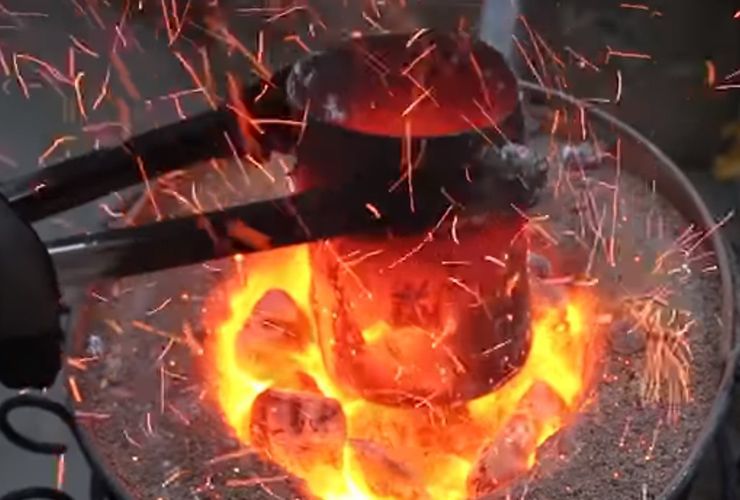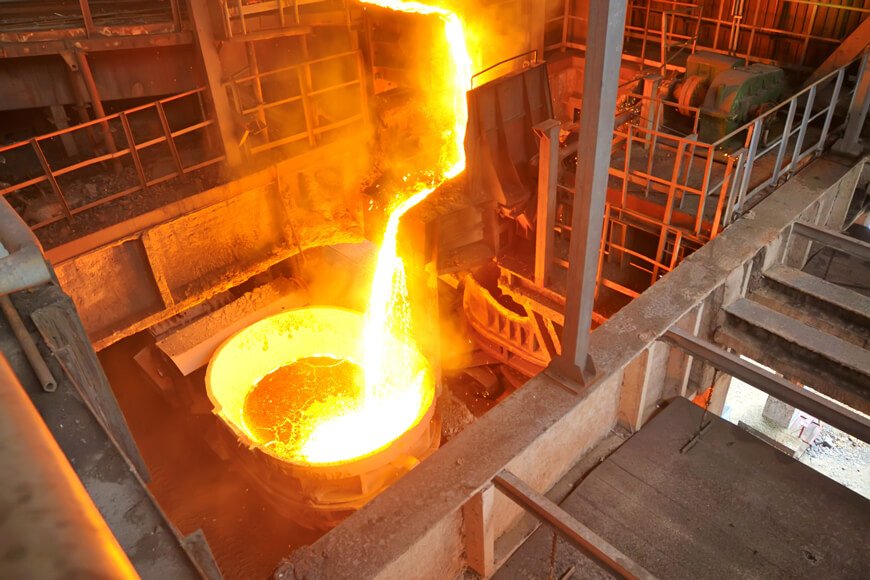Revealing the Intricacies of Style and Production at a Metal Foundry
The style and production processes at a metal foundry entail a collection of intricate actions. Each phase, from picking basic materials to melting and casting, plays an important duty in the final item. Metal Foundry. Accuracy and quality assurance are extremely important in this market. As modern technology breakthroughs, new innovations are emerging. These growths may redefine traditional methods. What effects do these adjustments hold for the future of metal foundries?
The Melting Process: Turning Raw Materials Into Liquid Metal
The melting procedure serves as the important primary step in changing raw products right into liquid metal, a procedure important for foundry operations. This stage starts with the mindful option of steels, which might include light weight aluminum, copper, or iron, relying on the desired final product. Each product is evaluated for pureness and structure to ensure perfect melting problems.

As the steels reach their melting point, they transform from strong to fluid, enabling more refinement. This procedure can likewise include the elimination of impurities through slag development, guaranteeing the quality of the liquid metal. Inevitably, the successful completion of the melting procedure lays the foundation for succeeding metalworking operations.
Molding Methods: Shaping Metal With Accuracy
Following the melting procedure, the next stage in steel foundry procedures entails molding methods that form the liquid steel right into desired forms. Numerous techniques are used, each chosen based upon the specific needs of the task. Sand spreading, one of the most common techniques, makes use of a blend of sand and binder to produce molds that can be conveniently shaped and reused. An additional method, investment casting, entails developing a wax pattern that is coated in a ceramic covering, permitting elaborate layouts and high precision.
Pass away casting, on the other hand, uses high-pressure to inject molten steel right into steel molds, causing durable and consistent products. Furthermore, the choice of molding method influences the cooling rate, surface finish, and dimensional accuracy of the last product. Recognizing these strategies is crucial for maximizing layout and guaranteeing the effective production of metal parts customized to details applications.
Casting Methods: From Model to Manufacturing
Countless spreading techniques are utilized in metal factories to move from prototype development to major production. Among these approaches, sand spreading attracts attention for its versatility and cost-effectiveness, making it perfect for both little and big manufacturing runs. Financial investment spreading, known for its accuracy, is typically utilized for intricate geometries, permitting for great details in the final product. Die spreading, ideal for high-volume manufacturing, makes use of liquified steel infused right into mold and mildews, providing outstanding surface area coating and dimensional precision.

Quality Assurance: Ensuring Quality in Every Pour
While the casting procedure can differ significantly between techniques, preserving rigorous top quality control is vital to determine that every pour meets the required standards. Quality assurance in a metal foundry includes a collection of systematic checks and examinations made to identify problems early in the manufacturing procedure. This consists of thorough assessments of raw materials, monitoring of melting temperature levels, and evaluations of mold integrity.
Foundry personnel utilize various testing methods, such as non-destructive testing and dimensional verification, to ascertain that castings achieve wanted specs. Furthermore, adherence to developed industry requirements and certifications boosts the dependability of the end product.
Feedback loops are likewise crucial; any kind of inconsistencies kept in mind throughout quality analyses are evaluated to improve processes and minimize future errors. Ultimately, a society of quality control cultivates not only client contentment but additionally a track record for quality in the competitive landscape of steel production.
Technologies and Technologies: The Future of Metal Foundries
The landscape of steel factories is rapidly evolving, driven by advancements in innovation and cutting-edge techniques. Automation and robotics are transforming conventional operations, enhancing efficiency and accuracy during production. Automated putting systems and robotic arms lower human mistake, resulting in higher high quality results. In addition, the assimilation of man-made knowledge is allowing useful link predictive maintenance, enhancing tools performance, and decreasing downtime.
Additive production is becoming a game-changer, enabling fast prototyping and the creation of complicated geometries that were previously unattainable. This modern technology facilitates the personalization of metal parts, accommodating specific client demands without substantial dead time.
Sustainability is additionally a key emphasis, with factories taking on greener techniques, such as reusing scrap steel and making use of energy-efficient heaters. These developments not just boost performance but additionally line up with international efforts in the direction of ecologically accountable manufacturing, making sure the future of metal foundries stays durable and check that affordable in a changing industrial landscape.
Frequently Asked Concerns
What Sorts of Metals Are Generally Utilized in Foundries?
Common metals made use of in shops consist of aluminum, cast iron, steel, bronze, and brass (Metal Foundry). Each metal has unique homes, making them ideal for numerous applications in markets such as automobile, aerospace, and construction, to name a few
Exactly How Do Factories Handle Waste and Environmental Influence?
Factories manage waste and environmental impact by executing recycling programs, utilizing sophisticated purification systems, and adhering to rigorous governing criteria. They often purchase lasting technologies to decrease emissions and promote liable resource use throughout their procedures.
What Precaution Are in Place for Workers?
Shops apply different precaution for workers, including individual safety tools, correct ventilation systems, normal safety training, emergency action methods, and check that rigorous adherence to work-related health and wellness regulations to reduce dangers associated with hazardous products and equipment.
How Long Does the Whole Manufacturing Process Generally Take?
The entire production procedure normally takes numerous weeks, depending on the complexity of the design and the products used. Elements such as mold and mildew preparation, melting, and cooling time greatly influence the general period of manufacturing.
What Are the Key Challenges Faced by Metal Factories Today?
Metal factories today face obstacles such as rising material expenses, rising and fall need, ecological laws, experienced labor scarcities, and keeping quality assurance. These issues make complex production performance and productivity in a significantly competitive market.
The design and manufacturing processes at a metal foundry entail a series of intricate steps. The melting process serves as the vital very first step in transforming raw products into fluid metal, a procedure essential for foundry procedures. Complying with the melting process, the next stage in metal foundry operations includes molding strategies that shape the liquid steel into wanted kinds. Various casting approaches are utilized in metal shops to change from prototype development to major production. Quality control in a metal foundry includes a collection of methodical checks and assessments developed to identify issues early in the manufacturing procedure.